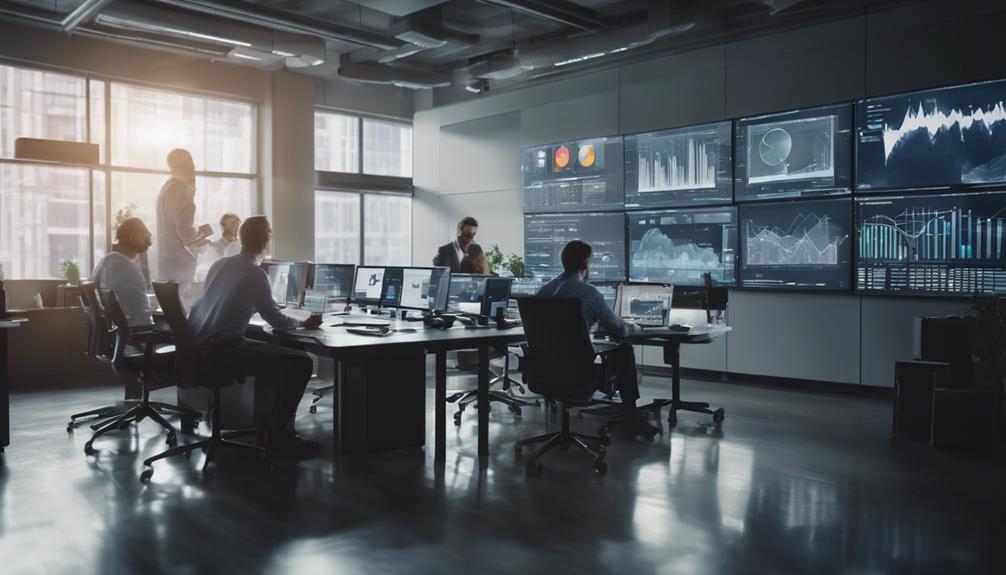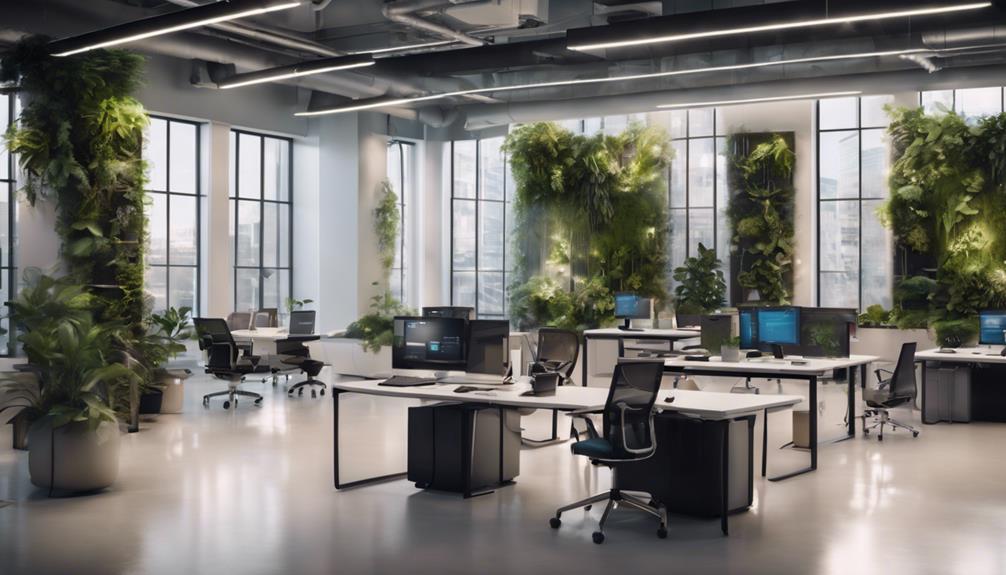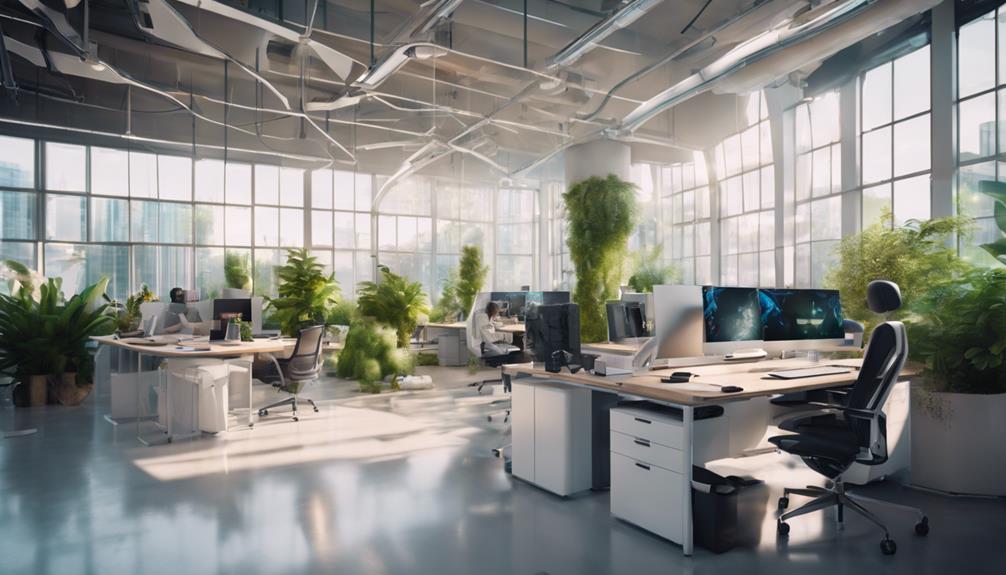Navigating modern facility management challenges requires you to stay adaptable and strategic. You'll need to rethink office layouts to accommodate hybrid work and utilize smart space solutions for efficiency. Address rising operational costs by leveraging innovative technologies and cost-effective practices. Don't overlook employee satisfaction; it enhances productivity and engagement. Balancing sustainability initiatives with budget constraints is crucial for aging infrastructure. Stay informed on evolving regulations and workforce dynamics. As you implement these strategies, you'll find a clearer path through the complexities of facility management and more effective ways to enhance your workplace environment. There's plenty more to discover.
Key Takeaways
- Conduct regular occupancy studies to analyze space utilization and enhance efficiency in hybrid work environments.
- Leverage smart office solutions and IoT devices for real-time monitoring, improving operational efficiency and reducing costs.
- Embrace flexible furniture and design solutions to accommodate diverse work styles and enhance employee comfort.
- Implement facility management software to streamline operations, communication, and compliance with evolving regulations.
Evolving Workplace Dynamics
Facility managers today face the challenge of adapting to rapidly changing workplace dynamics as the traditional office model shifts to hybrid and flexible environments.
You've likely noticed the increased demand for remote work options, prompting you to rethink space utilization and design. The concept of an ‘office' is evolving, which means you must consider new lighting, furniture, and layouts to accommodate diverse work styles.
Rising operational costs, along with compliance and staffing issues, further complicate your role. Balancing sustainability with budget constraints is crucial, especially when managing aging infrastructure.
Embracing these challenges requires innovative approaches and a willingness to adapt, ensuring your facility meets the needs of a modern workforce while maintaining efficiency and compliance.
Smart Space Utilization
Regularly analyzing space utilization is essential for enhancing workplace efficiency and meeting the evolving needs of employees.
By conducting occupancy studies, you can gather valuable insights into how spaces are being used.
Employing workplace occupancy sensor technology provides accurate data that helps you make informed decisions.
This data-driven approach allows you to optimize layouts, improve employee productivity, and increase satisfaction.
Don't hesitate to experiment with different configurations and iterate based on feedback.
By focusing on smart space utilization, you're not only adapting to current trends but also fostering a more dynamic and responsive work environment.
Ultimately, finding the right balance between collaboration and individual workspace can significantly enhance your facility's overall performance.
Current Challenges Faced

Navigating increasing operational costs and compliance challenges can be daunting for facility managers in today's rapidly changing landscape.
You're grappling with rising inflation and utility prices, which strain budgets and require innovative thinking to maintain efficiency.
Keeping up with evolving regulations adds another layer of complexity, demanding constant attention and adaptation.
Staffing shortages and the need for ongoing training complicate workforce management, making it tough to maintain productivity.
Balancing sustainability initiatives with budget constraints is also a challenge, as you strive to modernize aging infrastructure without overspending.
Each of these issues requires your proactive engagement, ensuring that you not only keep operations running smoothly but also prepare for future demands in facility management.
The Changed Workforce
Significant shifts in the workforce post-COVID have created new challenges for facility managers, requiring them to adapt quickly to changing dynamics.
You'll need to rethink your approach to workforce management, as the traditional methods often fall short. Consider these key adjustments:
- Embrace flexible scheduling to accommodate remote work preferences.
- Invest in modern technology to streamline communication and collaboration.
These changes not only help you meet the demands of a transformed workforce but also enhance efficiency and productivity.
Employee Satisfaction Strategies

Focusing on employee satisfaction is essential for creating a workplace that meets the diverse needs of today's workforce. You can implement strategies that foster a sense of security and belonging among employees.
Start by designing hybrid collaboration spaces that prioritize comfort and privacy. Invest in flexible furniture solutions that adapt to various work styles, ensuring everyone feels accommodated. Start by designing hybrid collaboration spaces that prioritize comfort and privacy. Invest in flexible furniture solutions that adapt to various work styles, ensuring everyone feels accommodated. Incorporate smart furniture for workplaces, such as height-adjustable desks, ergonomic seating, and modular components that can easily be reconfigured. These innovations not only enhance functionality but also create an environment that fosters productivity and collaboration.
Regularly seek employee feedback to identify areas for improvement and address concerns. Encourage a culture of open communication, allowing team members to voice their needs and preferences.
By emphasizing these aspects, you'll enhance overall employee satisfaction and productivity, creating a thriving work environment that benefits everyone involved.
Tighter Office Budgets
As you adapt to tighter office budgets, finding innovative cost-saving measures becomes essential for effective facility management.
You'll need to rethink your approach to expenses while ensuring the workplace remains functional and inviting. Here are some strategies to consider:
- Embrace remote work: Reducing the physical office space can significantly lower expenses on utilities and supplies.
- Leverage technology: Use cost-effective software solutions to streamline operations and reduce manual workloads.
Smart Office Solutions

To navigate tighter office budgets effectively, implementing smart office solutions can optimize your facility management practices while ensuring a productive work environment.
You can consider furniture rental options, which provide flexibility and significant cost savings.
Embracing collaborative workspaces that reflect casual, comfortable designs can enhance employee interactions and satisfaction.
Additionally, utilizing fit-for-purpose software streamlines your operations, making it easier to manage resources efficiently.
It's also vital to stay aware of shifts in workplace dynamics, as they'll inform your decisions on space utilization.
Technology Integration Strategies
Integrating advanced technologies in facility management can significantly enhance operational efficiency and improve overall workplace functionality. To make the most of these advancements, you should focus on a few key strategies:
Adopt IoT Devices: Use Internet of Things (IoT) technology for real-time monitoring of assets and environmental conditions.
Implement Facility Management Software: Streamline operations and improve communication between teams by utilizing robust software solutions.
Leverage AI for Predictive Maintenance: Employ artificial intelligence to anticipate maintenance needs, reducing downtime and costs.
Conclusion
Navigating the modern workplace isn't just about keeping the lights on; it's about transforming your space into a vibrant ecosystem.
By embracing smart solutions and prioritizing employee satisfaction, you'll not only tackle today's challenges but also future-proof your organization.
Think of yourself as the captain of a sleek ship, steering through rough waters with agility.
With a proactive approach and the right technology, you can create a thriving environment that fosters innovation and collaboration.










